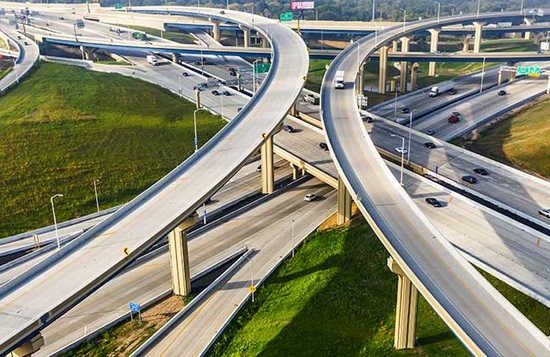HNTB Corporation
It is clear transportation agencies can respond quickly amid a crisis. As everyone is adapting to new ways of doing things in all aspects of their lives, we can draw significant lessons on how to invest in transportation, using both traditional and technology-driven infrastructure.

Based upon HNTB’s work with agencies across the country, we’ve identified 6 key elements that agencies can focus on as the country moves toward recovery and prepares for the future.
1. Data
Data analytics will be critical as we evaluate impacts on funding, revisit project priorities and document the continuing impacts on our transportation system. New data will need to be collected while existing data will need to be re-organized or re-evaluated. We will need to prioritize the acquisition and storage of that data and focus on data analysis. As an example, the transportation industry has pushed various travel demand management strategies for decades.
Once stay-at-home orders relax, working from home will likely become the new normal for millions of Americans and “shared transportation” will continue to be a concern. Agencies will need to track the impacts on traffic, use the data to determine if there are new patterns and have a renewed focus on the benefits of TDM strategies on the transportation system and the environment. This also will be a good time, again driven by data, to reassess equity and transportation access.
2. Electronic Payments
As toll and transit agencies have been experiencing for some time, we will continue to see the increase in electronic and touchless payment systems and technologies. While many toll agencies have started the move to electronic toll collection, the pandemic response is increasing that shift to use ETC technologies. Now, toll booth operator collection is not an option, given public health safety considerations. Toll agencies need to continue working aggressively to ensure that systems are interoperable to support users not only in their state, but from around the nation.
Transit agencies also are increasing the use of cash-free, touchless transit payment systems and technologies using technologies that are on the market today.
The biggest challenge will be to ensure that those transit users who are cash-based and do not use credit or debit cards still have access to transit and mobility on demand options.
3. Commercial Vehicle Solutions
While store shelves were occasionally bare due to panic buying, the entire supply chain was in constant motion to ensure those shelves were restocked. The movement of goods require truck facilities and policies that support the supply chain, such as rest areas, gas stations and food options that can support trucks, all of which were impacted, resulting in challenges for truck drivers.
In addition to long-haul goods movement needs, the local movement of goods is going through a fundamental shift. As people have found, home delivery services and freight movement will be even stronger in the future, even after the pandemic ends. This means we must create efficiencies and policies supporting the entire national freight network, including trucks, trains, shipping and intermodal transfer facilities, to create a resilient transportation system.
4. Vehicle Hygiene
We will continue to adopt new ways of doing business to ensure shared-use vehicles are clean and germ-free. Technologies at stations, in vehicles, and off-board fare payment systems can help with this, but standards and policies are critical components needed to make these solutions actionable and effective.
UV scanners have been used to clean vehicles at the end of the day and, in some cases, scan people entering facilities to kill pathogens on their clothes.
Kiosks, which are being tested in airports that perform biometric screening of passengers while they check in for their flights can be used to monitor the health of individuals using the transit system.
5. Operations and Maintenance
Traffic management systems are currently operated from a central facility or traffic control center. These facilities are designed to promote multi-agency coordination of incidents. During an unprecedented event that would close the control center, remote operations and maintenance tools need to be developed and implemented to permit that coordination of events. Virtual traffic management center technology would allow operators to see and control all traffic control devices from any location with a sufficient internet connection.
Real-time team collaboration tools, like WebEx or Microsoft Teams, can be used to enable the team coordination.
All field devices need the ability to be remotely monitored and controlled, including intrusion protection systems, intelligent power supplies, ethernet switches and control devices, adequate bandwidth and managed with a sophisticated network monitoring tool to promote remote and touch free operations and maintenance.
Policies and procedures will need to be developed and refined to use drones and unmanned aircraft to monitor and inspect critical infrastructure. Training and tabletop exercises in the use of these tools is essential.
6. Cloud and Edge Processing and AI
Data management centers, virtual traffic management systems and all of the monitoring systems require a sophisticated information technology infrastructure to operate effectively on a day-to-day basis, but even more so during a crisis like the COVID pandemic. Agencies need to continue developing and implementing a cloud strategy to take advantage of the redundancy provided by cloud providers in terms of systems and operations and maintenance personnel.
In the coming months, we will come out of this crisis and begin the long recovery process. A transportation system that provides access to all users and provides for the efficient and effective movement of goods and people across our entire transportation system will be critical to the success of that process. The more lessons we can learn and improvements we can make as a result will not only support the immediate recovery efforts, but also prepare our transportation system for future challenges.




